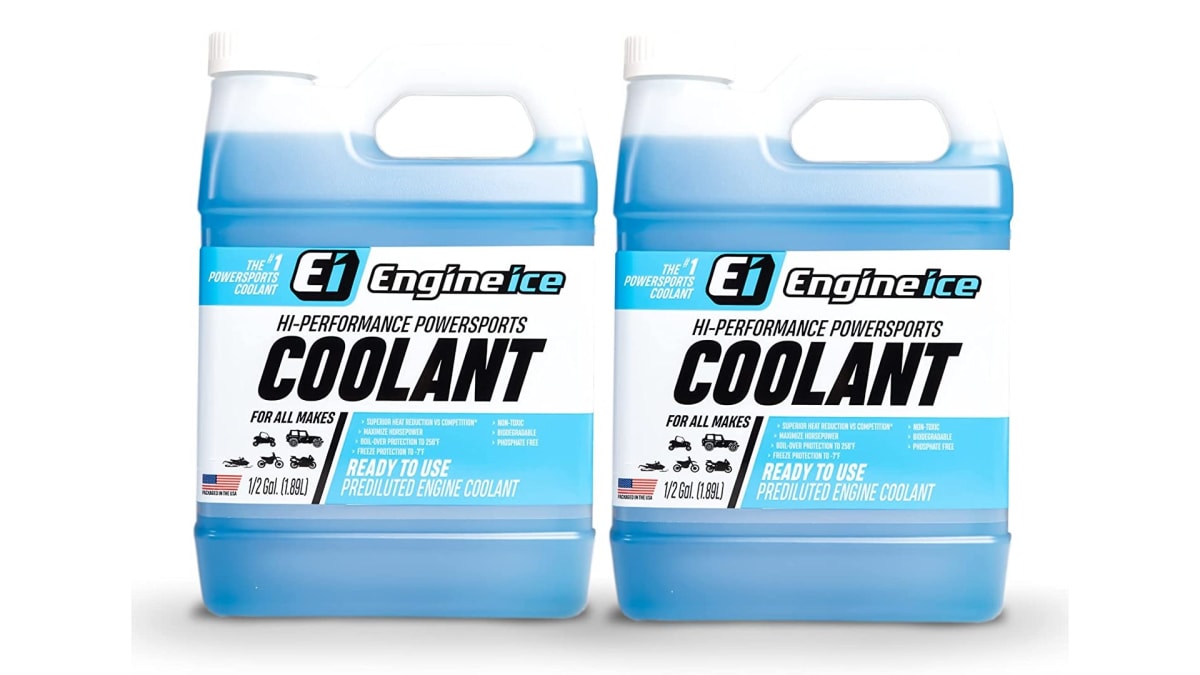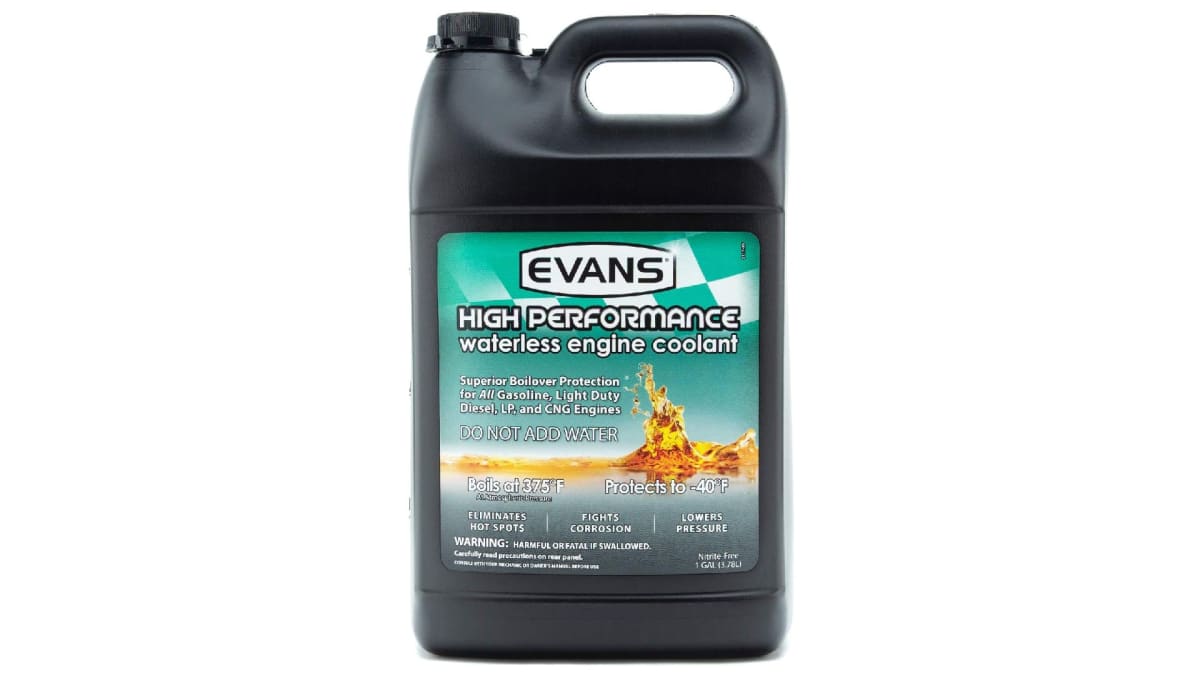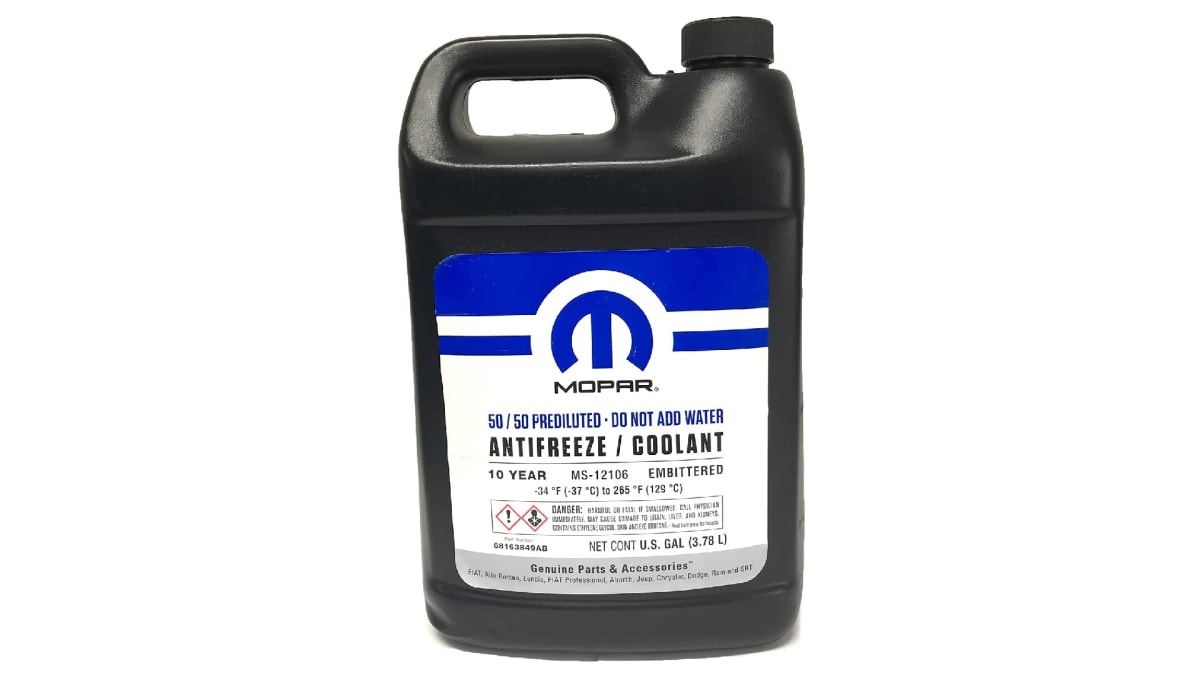The best antifreeze fluids to keep your car's engine in tip-top shape

Autoblog is not affiliated with the brands featured in our articles, but when you make a purchase through links on our site we may earn a commission.
Looking for a solid antifreeze fluid for your car’s engine? Take a peek at the top choices of 2022 and our buying guide that can help you learn more. Have you ever wondered what antifreeze fluid is and why your car needs it? Think about it this way — the combustion engine generates a lot of heat while you’re driving, so to maintain its operating temperature your vehicle requires some kind of liquid, which is where antifreeze fluids come in.
With so many options available, how will you be able to separate the good choices from the bad ones? This can be even more difficult if you don’t know anything about cars, so to make your life easier we’ll be looking at some of the highest-rated antifreeze fluids in 2022, as well as a few tips on how to find the right fluid for your requirements. Buckle up your seatbelt and let’s start with the first antifreeze fluid on our list.
Comparing our favorite antifreeze for 2022
Valvoline Basic Prediluted Antifreeze Fluid: High quality
Buy on Amazon
First up is the Valvoline basic prediluted antifreeze fluid. This antifreeze fluid is intended for all high-mileage vehicles no matter the make or model, and it has several different additives that will lubricate internal seals and extend their overall longevity. This antifreeze fluid can last for up to five years or 150,000 miles, and because of this, you’ll be able to drive your vehicle without having to worry about fluid replacements any time soon. This antifreeze fluid also contains Alugard Plus, an additive that’s not found in any other antifreeze fluids and allows the formula’s chemistries to work together to offer maximum protection.
Pros
Universal — use with any vehicle
Protects and cleans gaskets and seals
Great for cold- and hot-weather use
Cons
Isn’t entirely suitable for newer vehicles
Zerex Phosphate-free Top Antifreeze Fluid: Another great option

Buy on Amazon
On the hunt for a great antifreeze fluid for your diesel vehicle? If that’s the case then you should certainly take a look at the brand-new version of Zerex’s phosphate-free antifreeze fluid. Even though its packaging has changed, the quality is still the same. This antifreeze fluid’s formula features a nitrite-based preservative that assists in protecting your engine’s cylinder liners from cavitation, a kind of erosion that’s pretty common when it comes to diesel-powered vehicles. This fluid can be a great choice if you have multiple vehicles with different fuel types, as it can be used with both diesel and gasoline. This antifreeze fluid won’t harm your vehicle, and you can pick it up in two different options — concentrate and ready-to-use — to find the one that’s right for you.
Pros
Great for diesel and gasoline vehicle
Protects against cavitation and hard water deposits
Multiple options available
Cons
Not ideal for gasoline engines
Engine Ice High-performance Antifreeze Fluid: Good value

Buy on Amazon
If you live somewhere that has extreme temperatures, definitely consider trying out this all-around solid Engine Ice high-performance antifreeze fluid. Unlike some other options on the market, this specific fluid has quite a robust formula and features a propylene glycol (PG) foundation. This antifreeze fluid’s chemical formula ensures that it won’t deposit any scale or mineral particles in your car’s radiator, and it offers boilover protection up to temperatures of 256° F and freeze-up protection down to -26° F. This antifreeze fluid comes ready to use, so you won’t have to mix anything yourself and can instead just pour that bad boy into your vehicle.
Pros
Extreme temperature protection
Ready-to-use, premixed formula
Comes in a pack of two
Cons
Evans Waterless Engine Antifreeze Fluid: Great value

Buy on Amazon
This Evans waterless engine antifreeze fluid is certainly one of the more cost-effective antifreeze fluids on the market right now. As its name suggests, it contains no water, reducing the chance of corrosion and reducing maintenance costs. You can use this antifreeze fluid in many modern, classic, and vintage vehicles, but just make sure to first remove any old water-based coolants before inserting this one. This fluid has a 375° F boiling point, and it won’t vaporize. In terms of quantity, this antifreeze fluid is available in a few options, including packs of one, two, and four, letting you grab some for the here and now and also stock up for the future.
Pros
Waterless antifreeze formula
Great for all kinds of cars
Available in multiple quantities
Cons
Significantly shorter lifespan than competitors
Mopar Premixed Antifreeze Fluid Solution: Easy-to-use

Buy on Amazon
Last but not least we have the Mopar premixed antifreeze fluid solution. As you can probably guess from its name, the entire formula is already prepared, so you’ll be able to pour it directly into your car without having to do any extra mixing — how cool is that? This anti-freeze fluid can last you up to 10 years or 150,000 miles (whichever comes first), and its formula has been specially designed for newer vehicles. You won’t experience any corrosion, boil-overs, or freeze-ups thanks to its ethylene glycol-based solution, and its affordable price makes this antifreeze fluid a solid option for your car.
Pros
No mixing required
Protects your engine
Instructions included on the back of the bottle
Cons
Not suitable for all vehicle brands
Buying guide: Antifreeze fluids
So there you have it, the above-mentioned selections are some of the top antifreeze fluids on the market in 2022. Just remember, though, that not all options are perfectly suitable for your vehicle. In this section, we’ll take a look at the different kinds of antifreeze fluids, important things that you should pay attention to, average prices, and some frequently asked questions. Without wasting any time, let’s get right into it!
Types of antifreeze fluids
There are a few different types of antifreeze fluids available, including organic antifreeze, inorganic antifreeze, and hybrid antifreeze. Let’s do a quick side-by-side comparison of all three:
Organic antifreeze fluid — First up, we have organic antifreeze fluids. These fluids are available in a couple of colors, including dark green, orange, pink, blue and red. They don’t contain silicate or phosphate, and you’ll typically be able to drive at least 150,000 miles with this kind of antifreeze before you need to change it
Inorganic antifreeze fluid — Inorganic antifreeze fluid is formulated using inorganic acid technology (IAT) and contains ethylene glycol & silicate. Unlike organic antifreeze fluid, you’ll need to flush this one more regularly — every 30,000 miles, and sometimes even less. You can purchase these antifreeze fluids in two different colors, yellow and green
Hybrid antifreeze fluid — Then there’s the all-mighty hybrid antifreeze fluid. This particular model has a service life of five years or around 100,000 miles and comes in a yellow or orange color
The majority of vehicles made before 2002 require an older green inorganic antifreeze fluid, while new vehicles use hybrid or organic antifreeze.
How much does antifreeze fluid cost?
Want to purchase antifreeze fluid for your car? You should expect to pay anywhere from as little as $20 up to $70 for certain fluids. This price range will vary depending on the type of antifreeze fluid you’re looking at, the total quantity, and the brand that makes it.
Why are antifreeze fluids better than water?
It doesn’t freeze
As you might know, the freezing temperature of the water is below 32° F (0° C). On some of the coldest days in winter, the temperature can easily reach much more frigid temperatures, especially depending on where you live. Not only will this cause the water to freeze, but it can also cause serious damage to your vehicle’s water system, leading to costly repairs.
To prevent this from happening to your car, you should consider purchasing antifreeze fluid. Many antifreeze fluids on the market can easily handle temperatures as low as -30° F, but to be absolutely sure we strongly advise you to look for this information, usually somewhere on the packaging label or product description.
Protects engine components
Many antifreeze liquids on the market protect all of your engine components, something that can massively increase your engine’s overall performance and longevity.
Stops rust and corrosion
Throughout the years of driving your vehicle, rust deposits can build up over your vehicle’s cooling system. This can be extremely bad for your engine and can even lead to severe malfunctions.
Luckily, antifreeze fluids come packed with special additives that assist in preventing corrosion and fully eliminating any scale deposits from the engine system.
Prevents overheating
Not only do antifreeze fluids handle low temperatures a lot better, but they can also successfully withstand extremely hot ones as well. Even if you’re driving on one of those scorching, 100-degree days, with a great antifreeze fluid you won’t have any sort of trouble with overheating.
How to replace the antifreeze fluid in your vehicle
Many local car dealerships and garages will charge you a fortune just to get your antifreeze fluid replaced, so why not do it on your own? Trust us, it’s really not that hard. We’ll be explaining the entire process step by step, so we definitely recommend paying attention:
1. Find a suitable antifreeze fluid
Before starting the replacement process, make sure that you purchase the correct antifreeze fluid for your car.
As we mentioned earlier, each vehicle has specific recommendations. You’ll typically be able to find a suitable antifreeze fluid mentioned somewhere in your car’s manual. If you can’t seem to find it, you can always get in contact with the manufacturer.
2. Switch the temperature control to maximum heat
Next, you should open up the hub of your vehicle and switch the temperature control to maximum heat.
If you have a more modern car, chances are your temperature operations will be controlled by electronic parts, so you’ll need to turn on the ignition to ensure that the heater core is fully opened up.
3. Check the engine temperature
Make sure that the engine temperature has completely cooled down — you’ll see a warning for this on the water radiator.
4. Remove the radiator cap
Grab a towel and slowly untwist the radiator’s cap, but don’t remove it entirely — instead, place it on top so that no contaminants can fall inside.
If you don’t know where your vehicle’s water radiator is, look up the layout of your car online.
5. Loosen the drain plug
Place a container underneath the radiator and loosen the drain plug. You’ll usually be able to do this by hand, but if you can’t seem to loosen it up then you can use a set of pliers — just make sure not to damage the plug.
6. Remove the reservoir
Once you remove the antifreeze fluid from the radiator, make sure that you place the plug back and secure it tightly.
The last thing that you need to do before the refilling process is to remove the coolant reservoir and completely drain it out in the plastic tub as well.
7. Fill the new antifreeze fluid
All you need to do now is pour the new antifreeze fluid in. First, add a few gallons into the reservoir and start the vehicle. With the engine running, just add the rest of the antifreeze fluid and wait for several minutes — the water pump will be able to easily devour it into the engine and radiator.
8. Completion
That’s really all you need to do, but make sure that you perform a quick check-up now and then to make sure that everything is functioning properly.
Antifreeze FAQs
Q: Can I mix different types of antifreeze fluids in my car?
No, you should never try to combine different antifreeze fluids as this can lead to irreversible engine damage. You should only use the same antifreeze that you already have in your vehicle.
Q: When should I change the antifreeze fluid in my vehicle?
This varies from one antifreeze fluid to another, so be sure that you check the user manual for more information. If you can’t seem to find it, consult a professional car mechanic — they’ll surely be able to provide you with a practical answer.
Q: Why do antifreeze fluids come in different colors?
Many brands use color-coding to denote the manufacturing form of the fluid, and you should go with a shade that’s suited for your vehicle.





